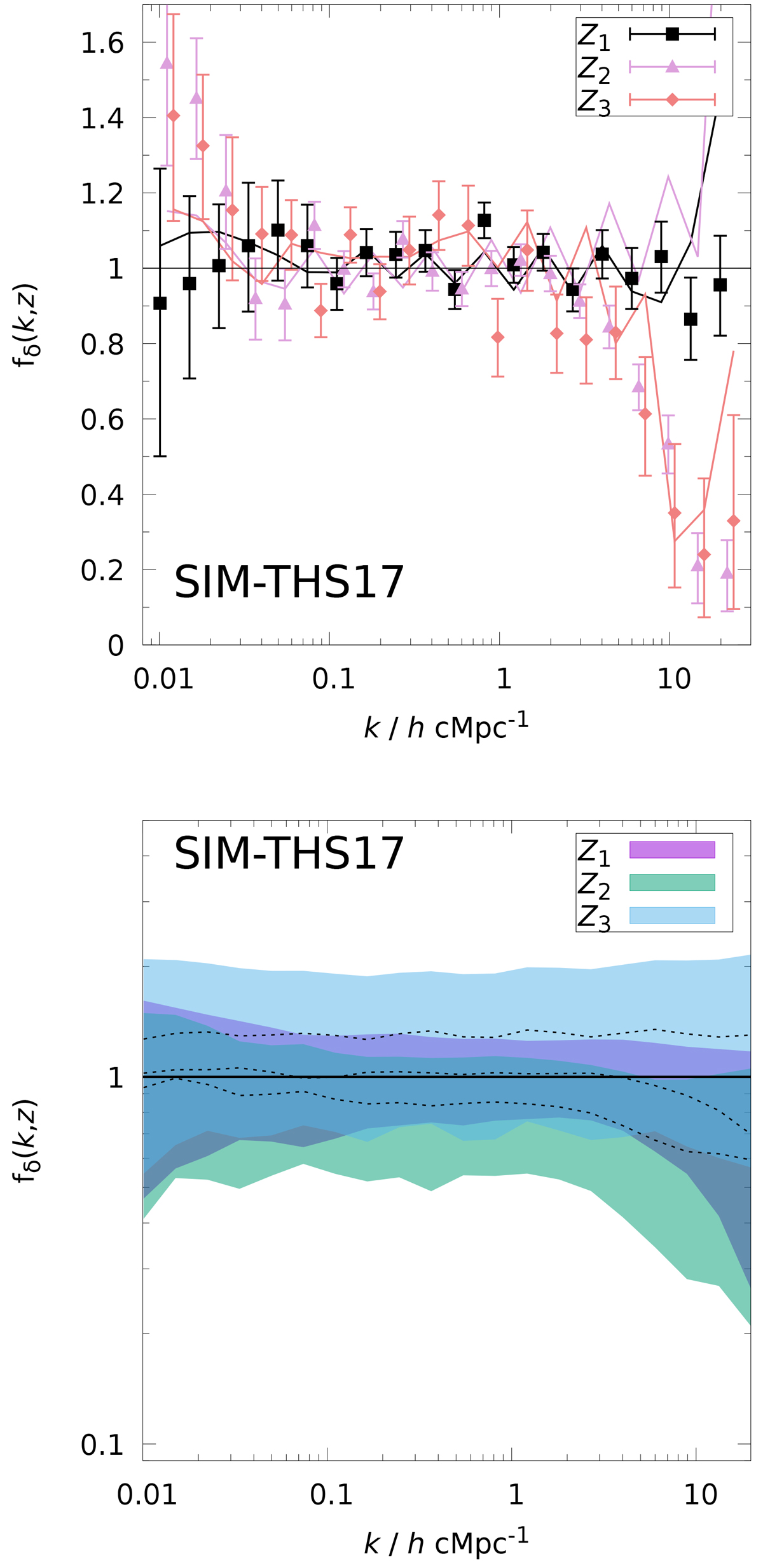Fig. 6.

Download original image
Verification test of the analysis code for fδ(k, z) using: an N-body simulated data vector, averaged over n = 1944 realisations of the KiDS-1000 data without IA; the code and data set-up for the KiDS-1000 analysis has Nk = 20 k-bins and three redshift bins Z1 = [0, 0.3], Z2 = [0.3, 0.6], and Z3 = [0.6, 2]. The reference power, Pδfid(k, z), is here identical to the cosmology of the simulation (Takahashi et al. 2017). The errors (68% CI) do not marginalise over a projection kernel uncertainty. Top panel: Simulated covariance of the average data, comprising n times the area of KiDS-1000. Deviations from the expected fδ(k, z) = 1 towards higher z and k ≳ 1 h Mpc−1 are related to the finite grid pixel size in the simulation (pixelation bias). The lines are additional reconstructions using noise-free data, based on Eq. (8) and halofit without pixelation bias. Bottom panel: Same as top panel, but with statistical errors as in a single KiDS-1000 survey.
Current usage metrics show cumulative count of Article Views (full-text article views including HTML views, PDF and ePub downloads, according to the available data) and Abstracts Views on Vision4Press platform.
Data correspond to usage on the plateform after 2015. The current usage metrics is available 48-96 hours after online publication and is updated daily on week days.
Initial download of the metrics may take a while.


